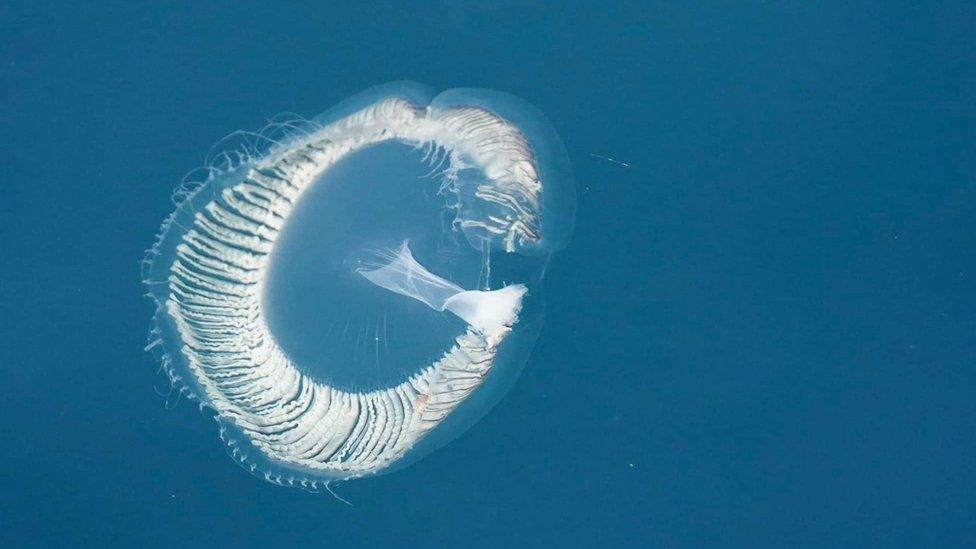The woman who spent Christmas in search of a rare plant
- Published
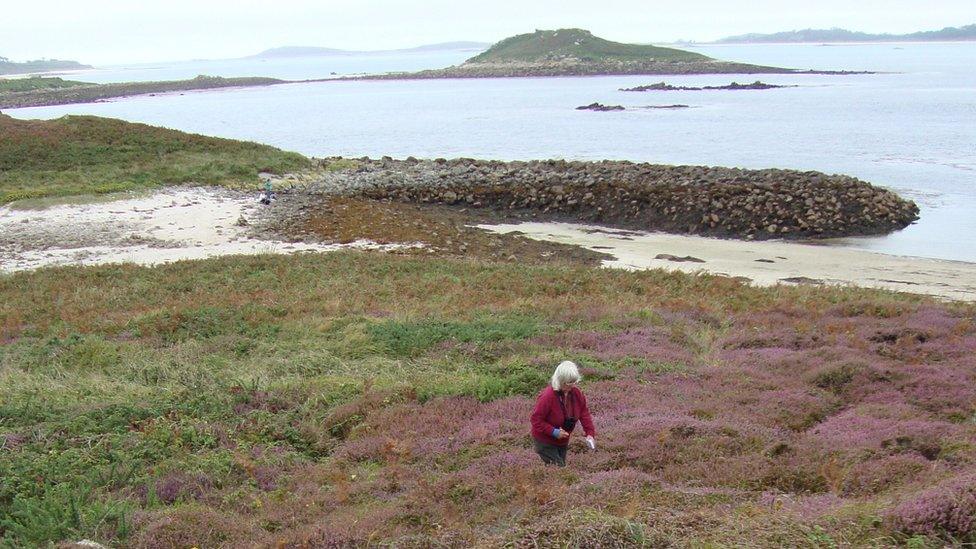
Rosemary has visited many uninhabited islands in the archipelago
Rosemary Parslow crawls on her hands and knees across the frozen ground under a wintry sky.
Most other visitors to the Isles of Scilly are holed up with family and friends.
But this natural history lover has other things on her mind: discovering a tiny endangered fern that 'blooms' in the middle of winter.
It's become something of a seasonal tradition for Rosemary, to the bewilderment of her three children.
"They all thought I was totally barking," she says of her trips to find the plant. "Obviously, it gave a certain flavour to Christmas."

The least adder's-tongue fern grows in the UK only on St Agnes
Rosemary dedicates her time to repeatedly returning to the islands to map rare and precious flora found almost nowhere else in Britain. She nearly drowned searching for one of the plants and is seeing first-hand the impacts of climate change.
After decades of adventures on the archipelago, she says she is determined to share her knowledge with a new generation of conservationists.
The Isles of Scilly, just off the coast of Cornwall, are made up of more than 100 islands, most of which are uninhabited.
They have a unique natural history, harbouring rare and beautiful wild flowers, globally important seabirds and unusual sea creatures.
Rosemary first visited the islands in 1958 to ring seabirds. "I fell in love with the islands and I've never looked back," she says.

The islands are home to rare flora and fauna, from birds to wild flowers
She eventually struck gold, discovering dozens of the rare ferns - called the least adder's-tongue fern - growing on a small patch of heath land.
The little-known plant (Ophioglossum lusitanicum), grows to only 2cm tall and has leaves the size of a human fingernail.
It gets its name from the snake-tongue-like central spike that appears in winter and produces spores.
One winter, when there was a freak snowstorm, she went back to discover the ferns dusted in a thin covering of snow. "Very Christmassy," Rosemary recalls.
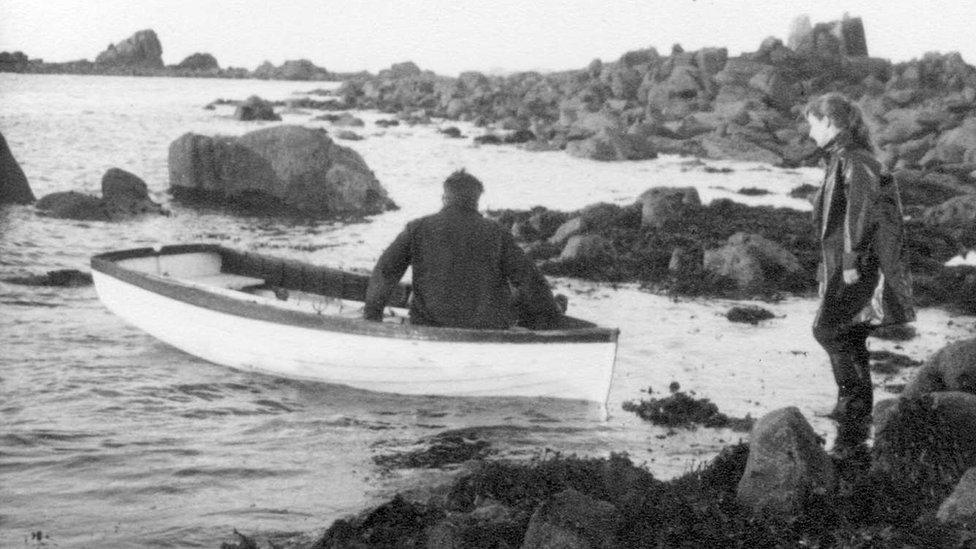
Rosemary in 1958 when she first visited the island to ring sea birds
However, in her quest to find another rare wild plant - a green-leaved herb related to rhubarb and sorrel, which grows only at the edge of beaches, or at the bottom of cliffs - she almost drowned.
While jumping from a rubber dinghy on to the rocks of a remote island, Rosemary managed to fall overboard.
"I was carrying all my gear - rucksack, boots, heavy outdoor clothes and binoculars round my neck. I was thinking, 'I'm going to go under'," she recalls.
Thankfully, she managed to swim to a boat where she was hauled out, borrowing dry clothes from the passengers so she could continue her studies for the rest of the day.

Rosemary has worked in conservation all her life
That's not the only setback she has faced. Rosemary carved out a career working as a scientific assistant at the Natural History Museum in the 1950s, but had to resign when she married and started a family.
"In those days there was no keeping your job open - when you got pregnant you had to leave," she recalls.
But she continued her work, illustrating natural history books, writing about the natural history of the archipelago, and later working for conservation bodies.
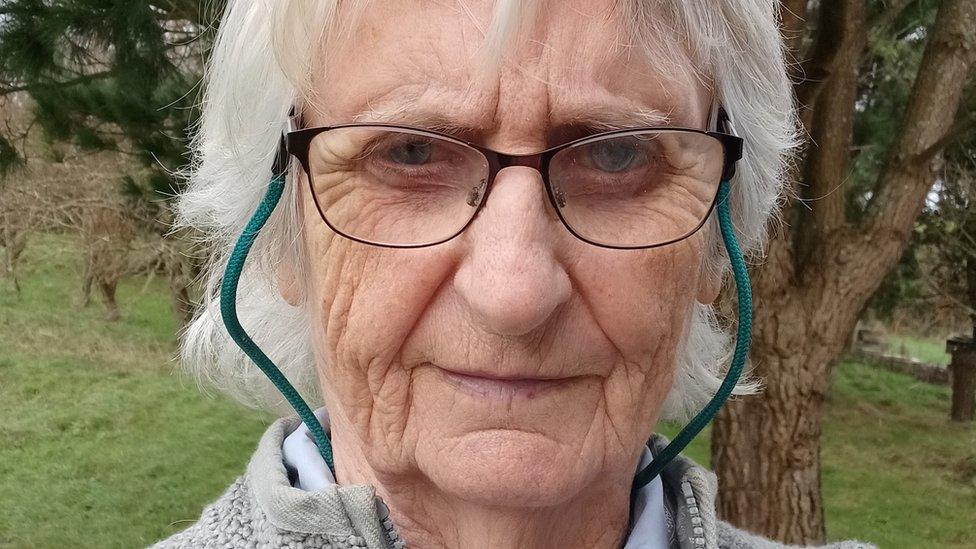
Rosemary today: 'Scilly is a magical place'
Now 87 - and officially retired - she continues to help map the coasts and heaths of the islands, which all too often involves recording declines.
"A lot of the plants I've been recording, which are found on the shore are vanishing," she says, citing the shore dock, whose shoreline habitat is particularly vulnerable to the ravages of climate change, from violent storms to sea level rise.
"We think, after all these years, it's probably gone extinct," she adds. "I've been back to all the old sites and can no longer find it."
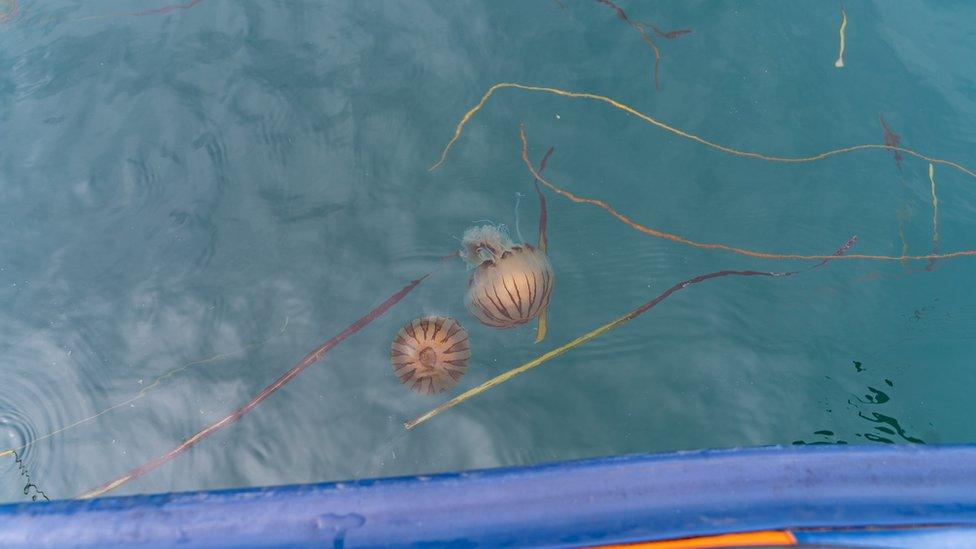
Jellyfish in waters off the Scilly Isles
This year she saw another ominous sign of the changing climate - tiny transparent jellyfish known as crystal jellies linked to the rapidly warming seas.
"I've never seen them before - they come from much further south, but there were thousands and thousands of them turning up in the harbour," she explains.
She also saw another rare visitor, ethereal relatives of sea squirts known as salps that live in the open oceans forming long chains of tiny animals.
Rosemary studied them at the Natural History Museum in the 1950s, but this is the first time she has seen them in the wild. "They were there in the sea all around Scilly - people had photographed them underwater in their millions," she says.
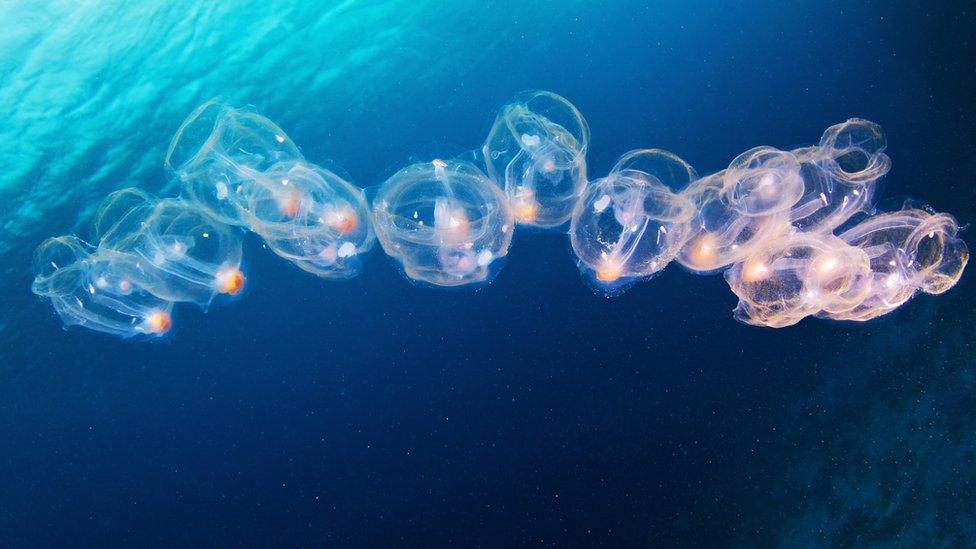
Semi-transparent marine animals known as salps
Rosemary's remarkable contribution to natural history has been recognised through a "nature hero" medal from the Wildlife Trusts.
"The fact Rosemary is still helping wildlife on Scilly in her late 80s is a testament to her passion, determination, and dedication to nature," says Craig Bennett, chief executive of the Wildlife Trusts.
As for the least adder's-tongue fern, it can still be found growing on St Agnes, Rosemary visited recently when the local wildlife trust organised a special trip for her.
"I was able to show people where the fern grew and relate it to the maps that I'd made in the past, so that in the future if I'm not around someone else could continue doing the monitoring," she says.
Her three children - each named after an island on Scilly - will carry on her legacy through their shared love for the place, despite their unusual family Christmases.
And her youngest, Helen, has inherited her mother's love of kneeling in the dirt, becoming an archaeologist.
"When she was a little girl, they used to say, 'Are you interested in wild flowers like your mother?' and she would say, 'No, not in the slightest, but I can recognise Ophioglossum lusitanicum.'"
Related topics
- Published3 November 2023

- Published11 September 2023
